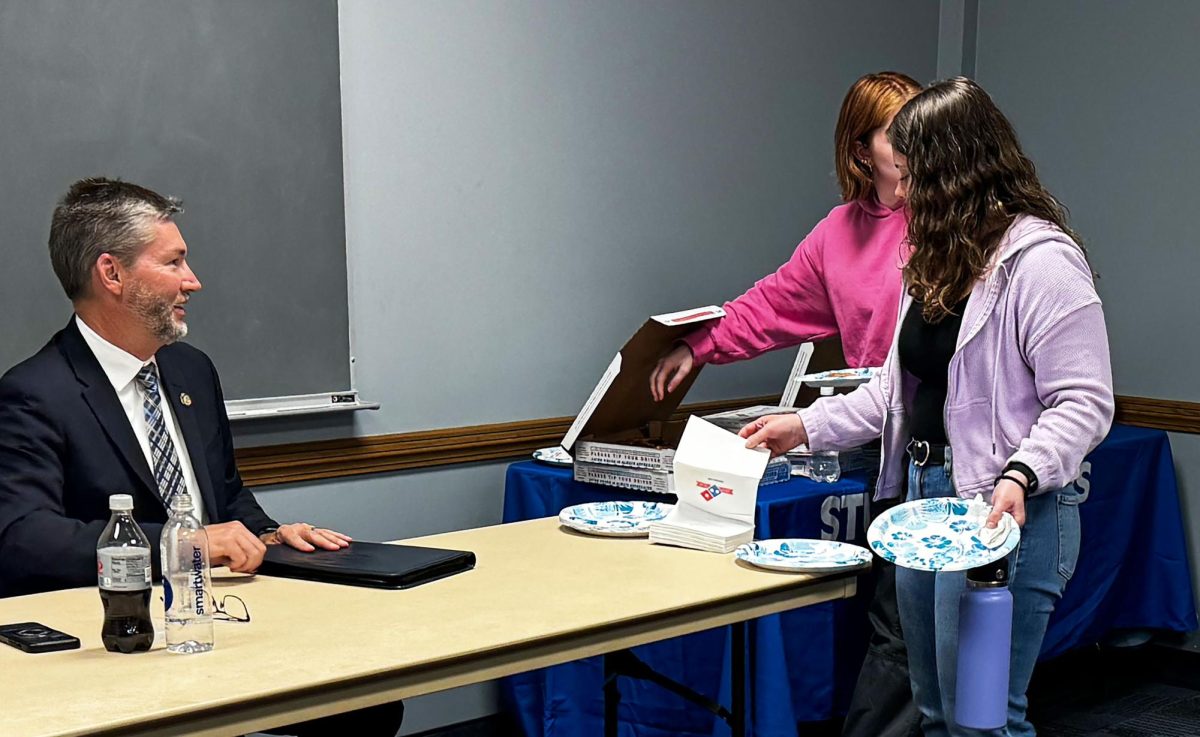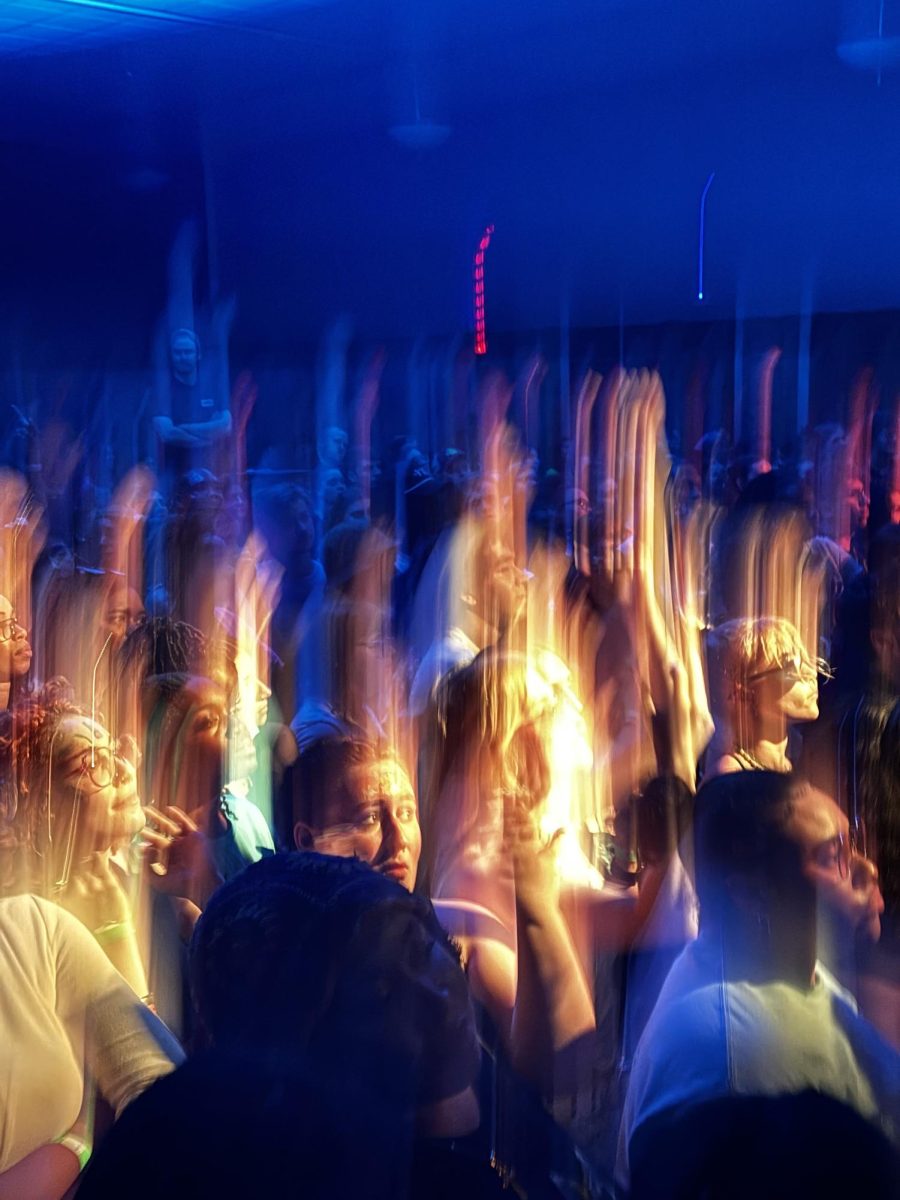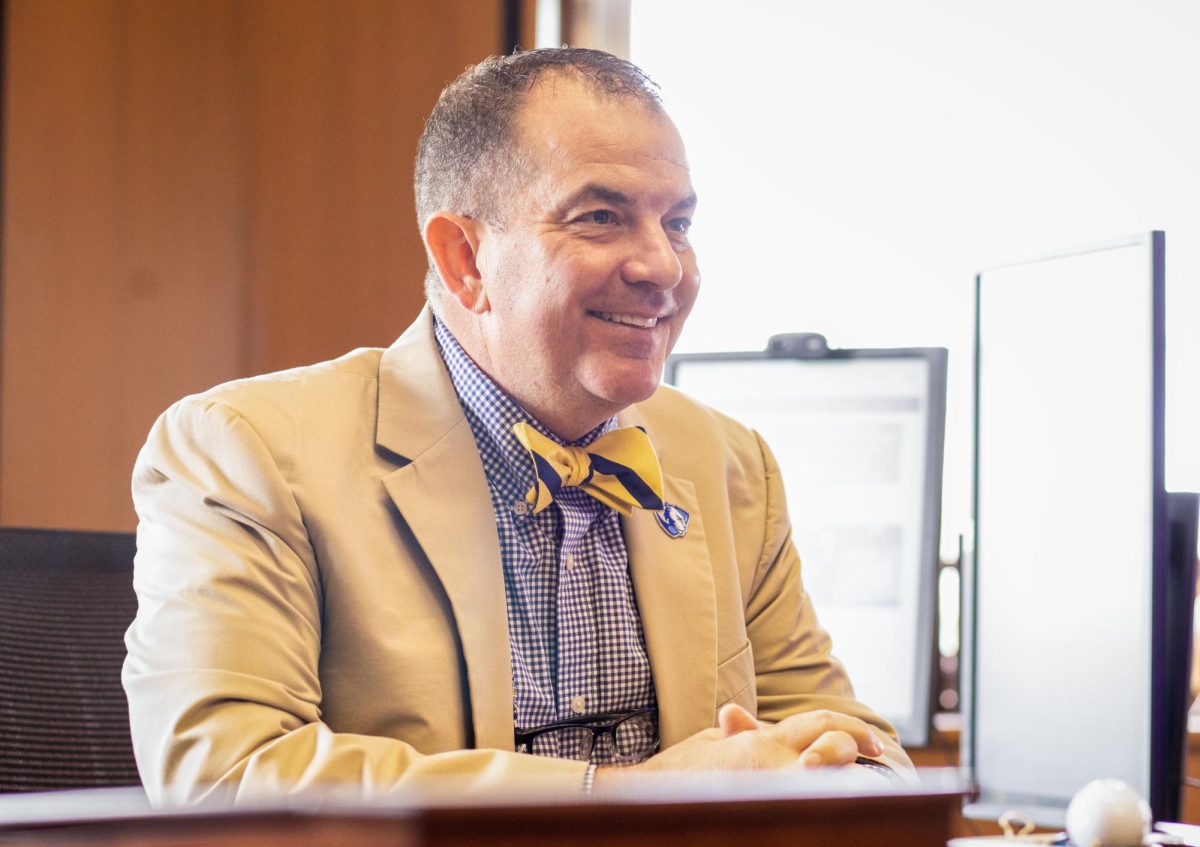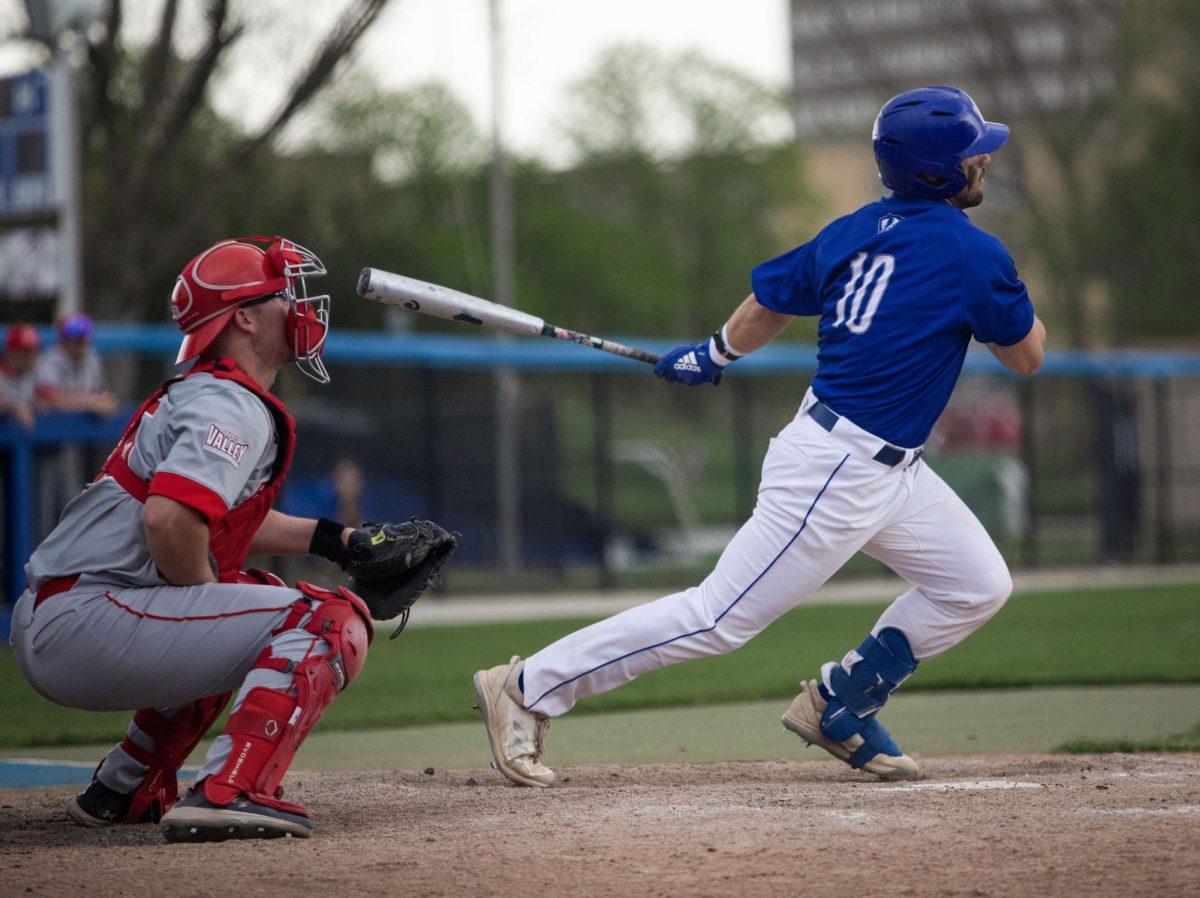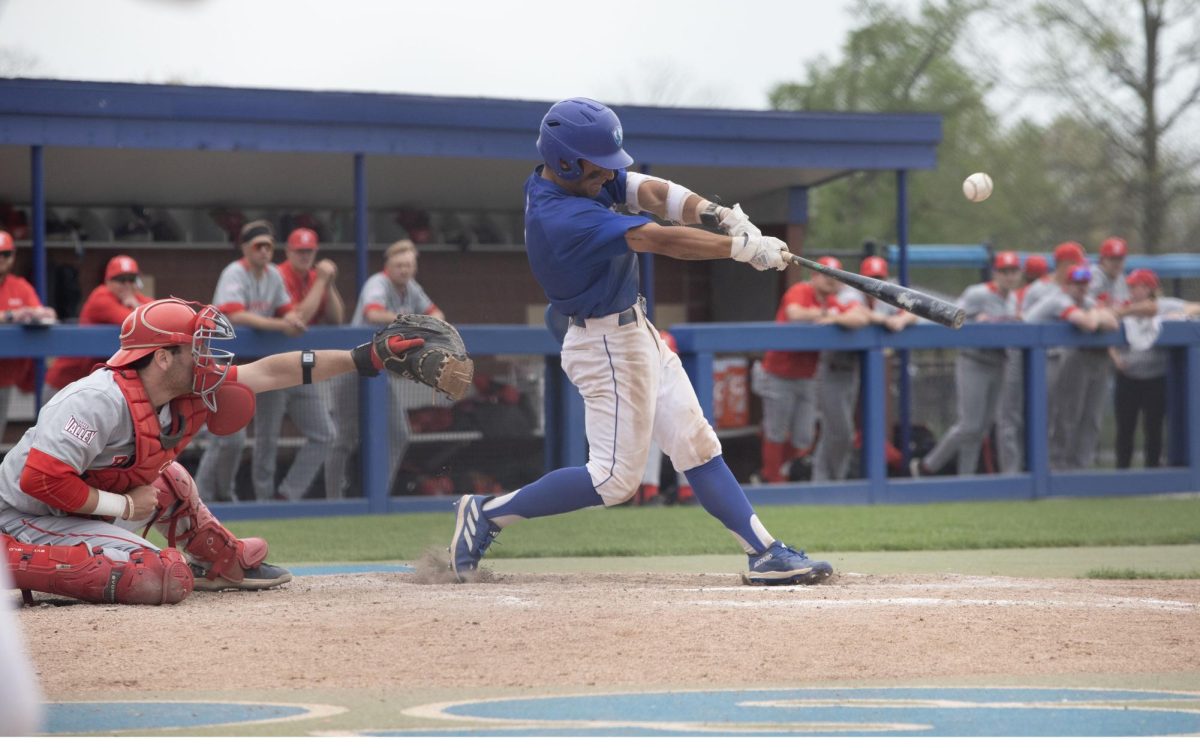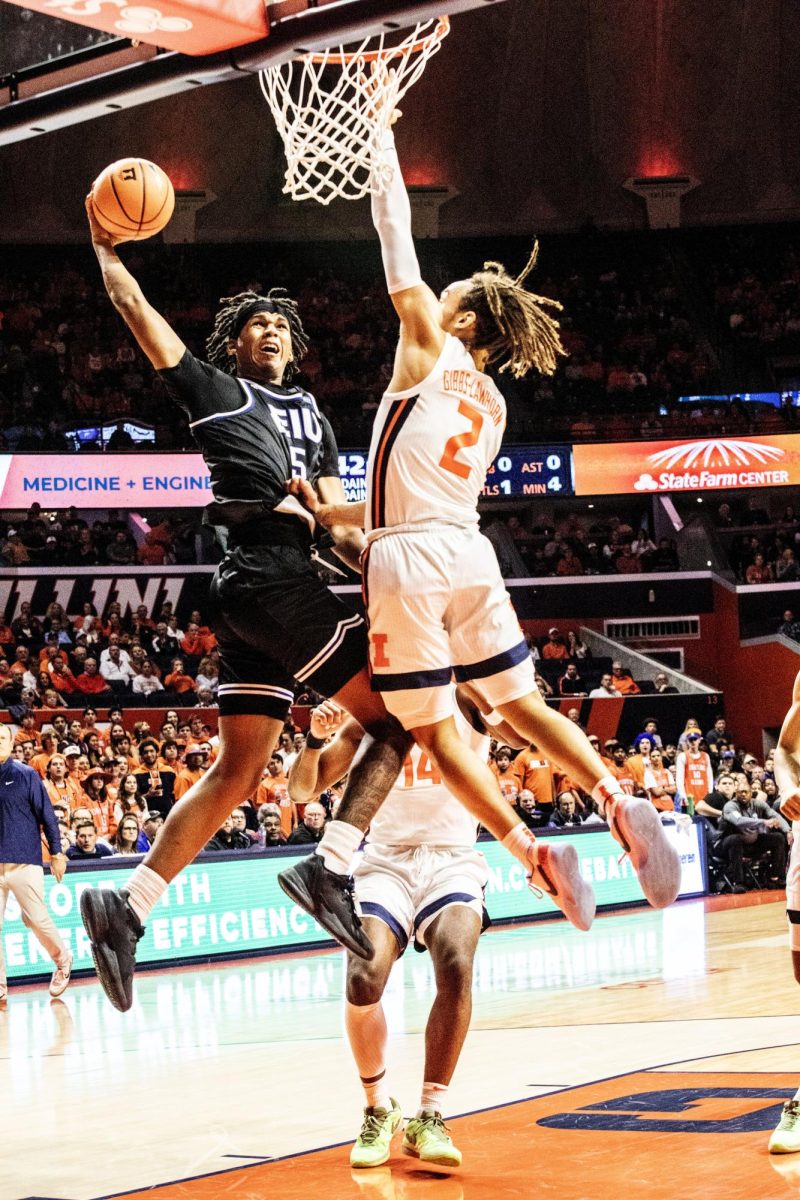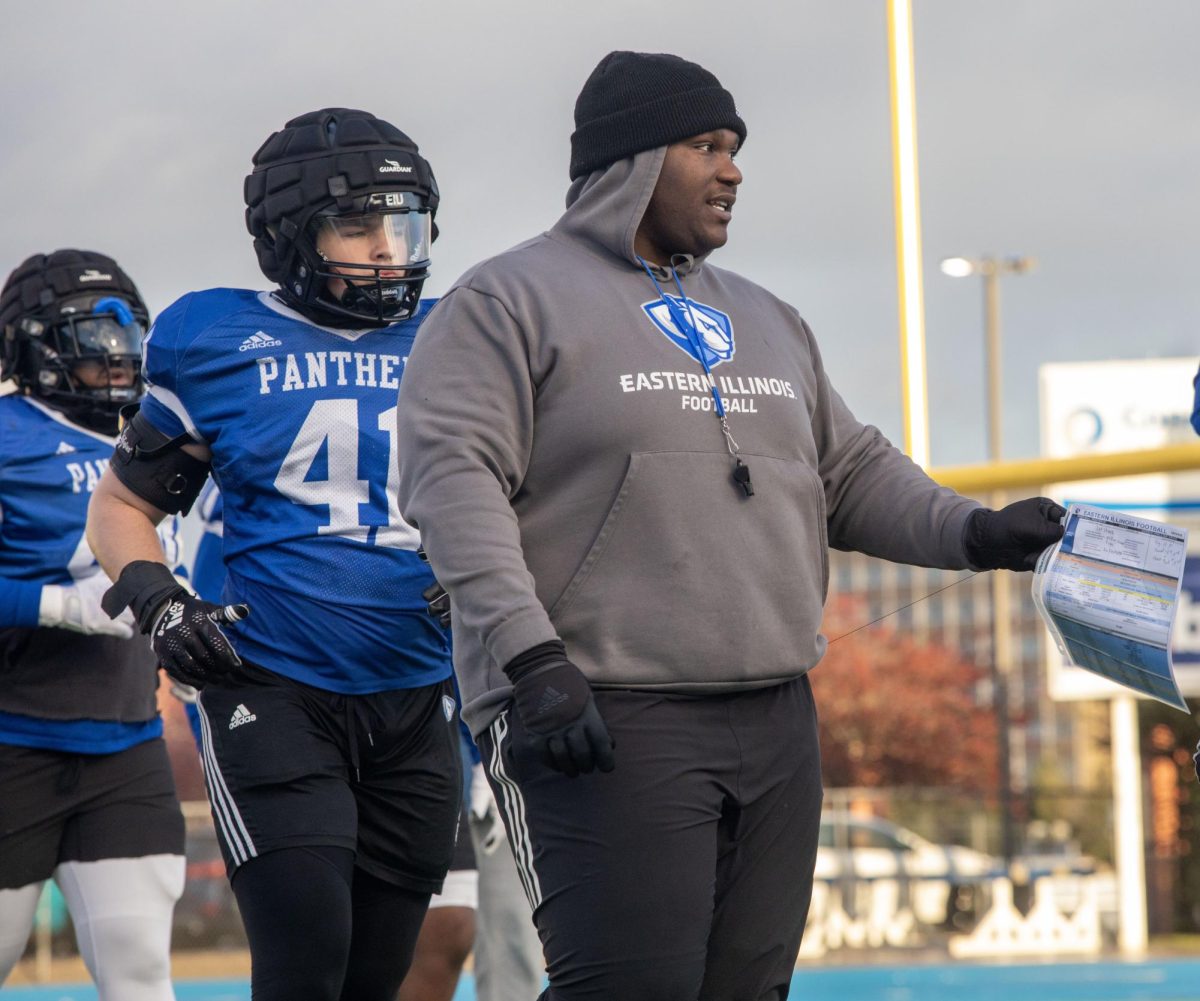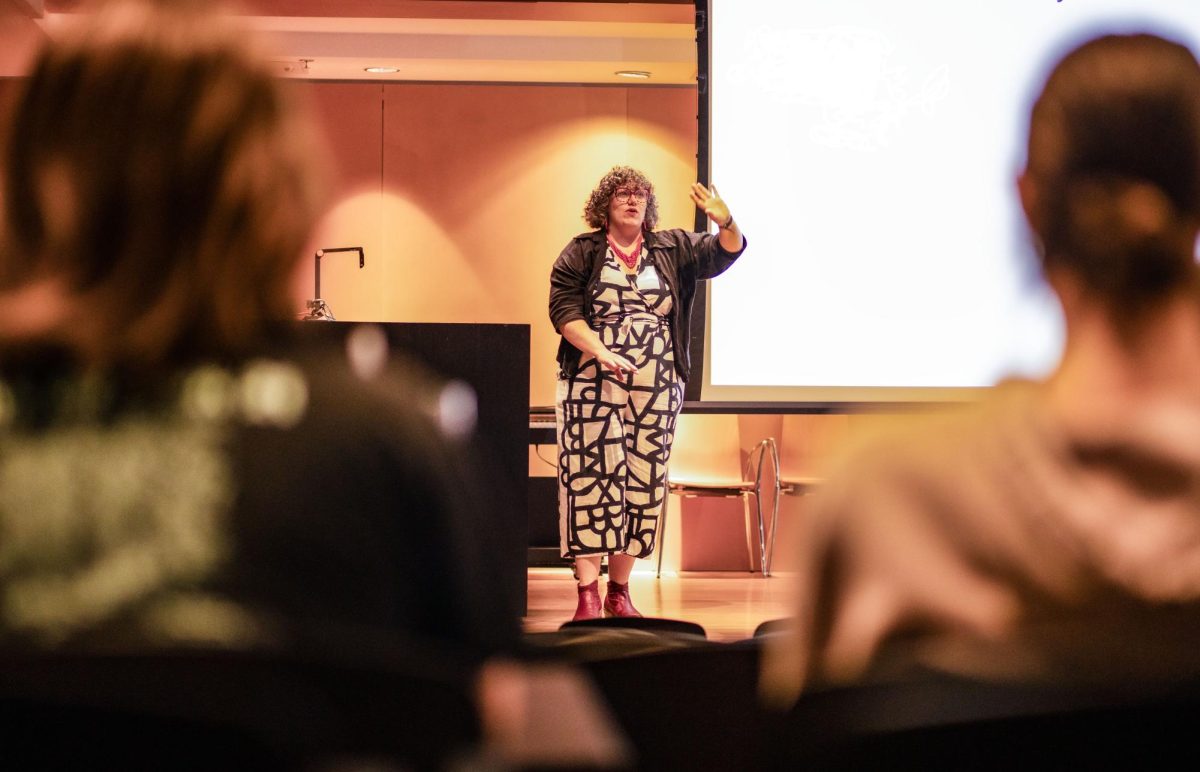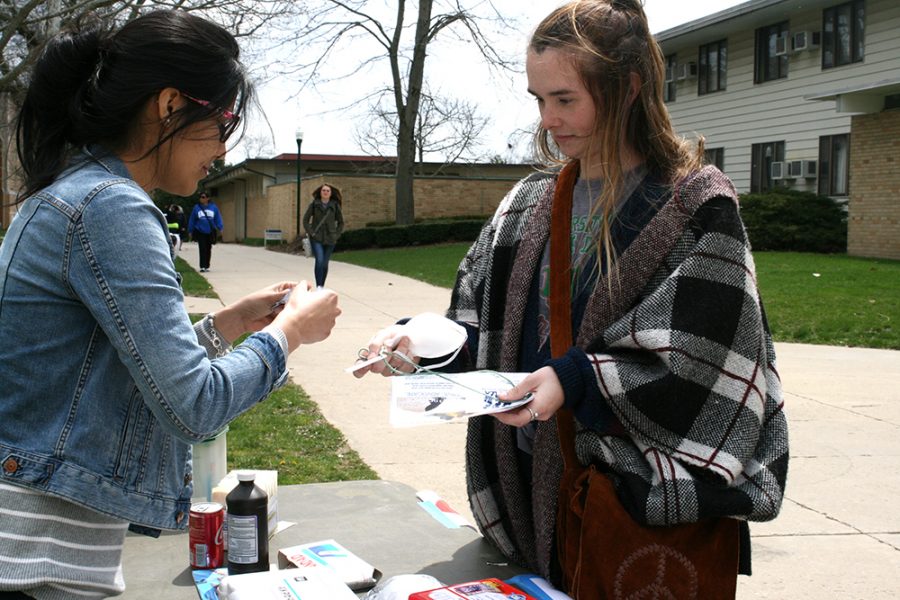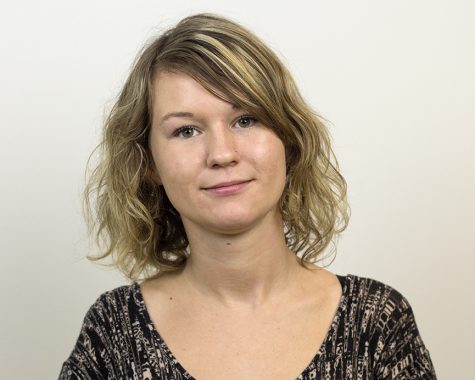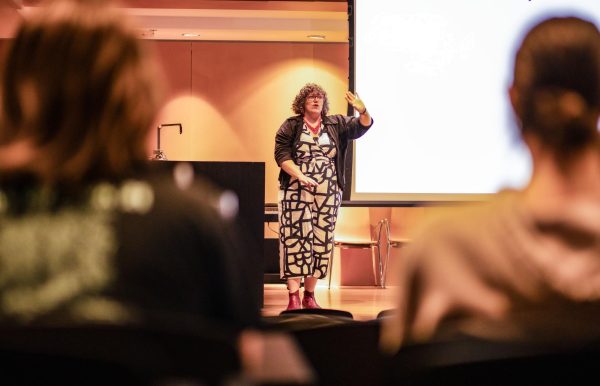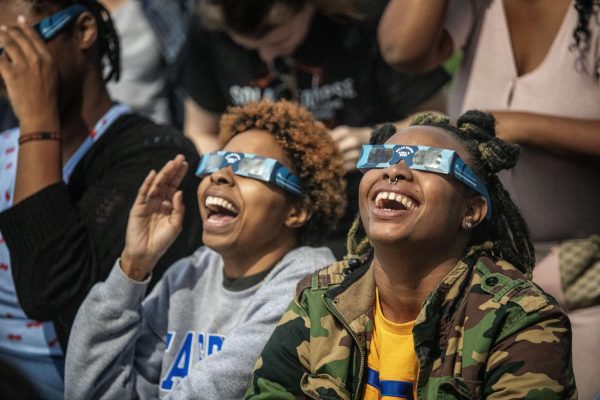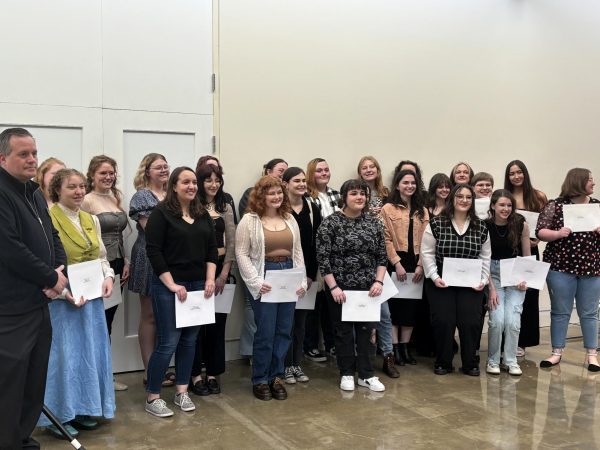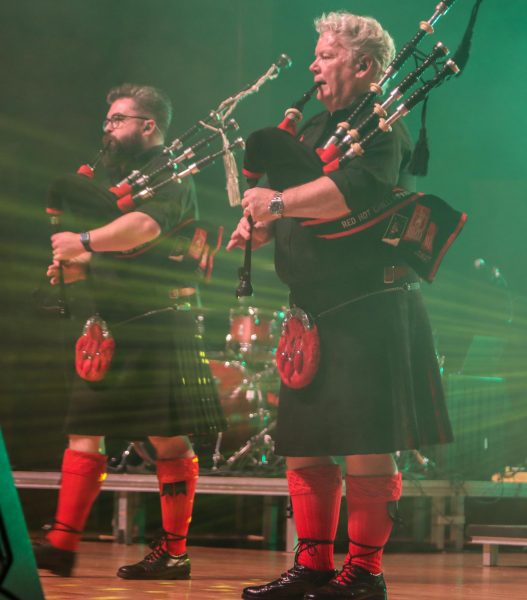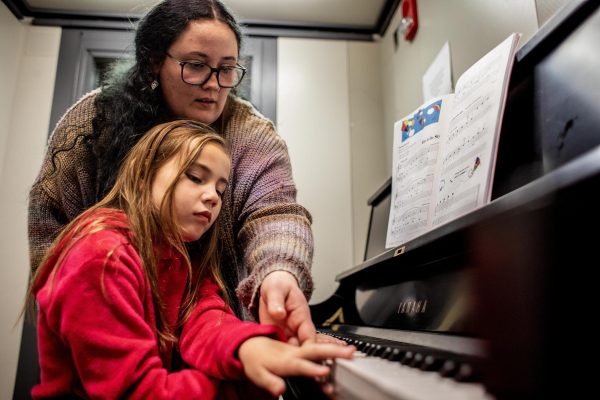Students find out what it would be like to live as a refugee during simulation
Olivia Meents, a junior political science major is inspected at the “health” station of the refugee camp.
April 19, 2018
During “Walk a Mile in a Refugee’s Shoes,” students experienced a simulation of what it would be like to live as a refugee, fleeing from their home country to find a new life in the US, on the Library Quad Wednesday afternoon.
At the simulation, organized by Students for Peace and Justice, students were assigned a passport in which they were told the country they would be fleeing from.
Students alternated between six different stations, the “border” station, which served as the first entry for a refugee camp, the “shelter” station, the “education” station, which demonstrated the education options that would be available inside the refugee camp, the “health” station, where it was determined if refugees were well enough to enter the US without treatment, the “food” station, which demonstrated what a refugee would eat and the “water” station.
Upon arriving at the shelter station of the camp, students were able to gain perspective on the living conditions a refugee might be facing.
A 3.5 meter blanket was laid out to simulate the actual size of a tent inside of a refugee camp regardless of how many family members had to stay in it, Doris Nordin, the adviser of Students for Peace and Justice, said.
“The camp is supposed to be temporary, but sometimes you have to stay there from three to ten years to be accepted as a refugee,” Nordin said.
David Travis, a senior communication studies major, was assigned to be a refugee fleeing from Syria.
“This is mind-boggling. There’s no way we’re living inside of these tents. This is civil unrest,” Travis said.
Malik Smith, senior communication studies major, arrived at the shelter station as a refugee from South Sudanese, Kenya.
“When you walk a mile in a refugee’s shoes, you start to understand what they’re feeling. Living in an area with no space is an experience you don’t want to go through,” Smith said. “I’m blessed to live in the United States, but I feel for refugees in other countries.”
When Olivia Meents, a junior political science major, arrived at the health station as a refugee from Pakistan, she discovered she would only be allowed back into the United States under the condition that she wear a mask, since her refugee persona had a fever.
“I learned that refugees do not have a lot of access to education or space in their camps. There’s not a lot of resources available for them,” Meents said.
Evelin Reyes, an incoming master’s student oversaw the “health” station.
She said she was responsible for checking to see if refugees had a fever or broken limbs and determining if they needed pills or medicine before entering the US.
“I think this simulation can help people see refugees differently and understand their perspective,” Reyes said.
Ahmad Machmouchi, a senior marketing major, “arrived” in the US from the Dominican Republic during the simulation.
“I think this is a big struggle for refugees around the world, and I think many people don’t realize how hard it can be on them,” Machmouchi said.
Doris Nordin said she hopes this simulation will bring compassion to refugees by sharing their stories, so people will know where they come from and why they are fleeing their home county.
“They’re not fleeing because they want to but because they have to. It’s their only choice to be safe,” Nordin said.
Olivia Swenson-Hultz can be reached at 581-2812 or [email protected]




